 In
street disguise.... with Arthur piloting his Norvin in 1970.
In
street disguise.... with Arthur piloting his Norvin in 1970.
The Story of Norvin Racing
Engine
F10AB/1/3270
(currently
owned by Vincent enthusiast Michael Rosseau)
 In
street disguise.... with Arthur piloting his Norvin in 1970.
In
street disguise.... with Arthur piloting his Norvin in 1970.
 The
Heart of it all.
The
Heart of it all.
The original Rapide was built May 5, 1950 and sent to Conway's Motors registered as LPG 201. In 1955 the owner was AH Lovesay of London and in 1962 the owner was JL Edwards of Harrow. We have no information from 1962 to 1968 and on why the engine was removed from the Rapide and installed in the Norton.
This engine will be shown at USA VOC events as-is the summer of 2008 until a decision is made as whether to complete an extensive restoration of the engine to original factory condition or to preserve it's current configuration as an interesting period example of a highly modified racing Vincent engine.
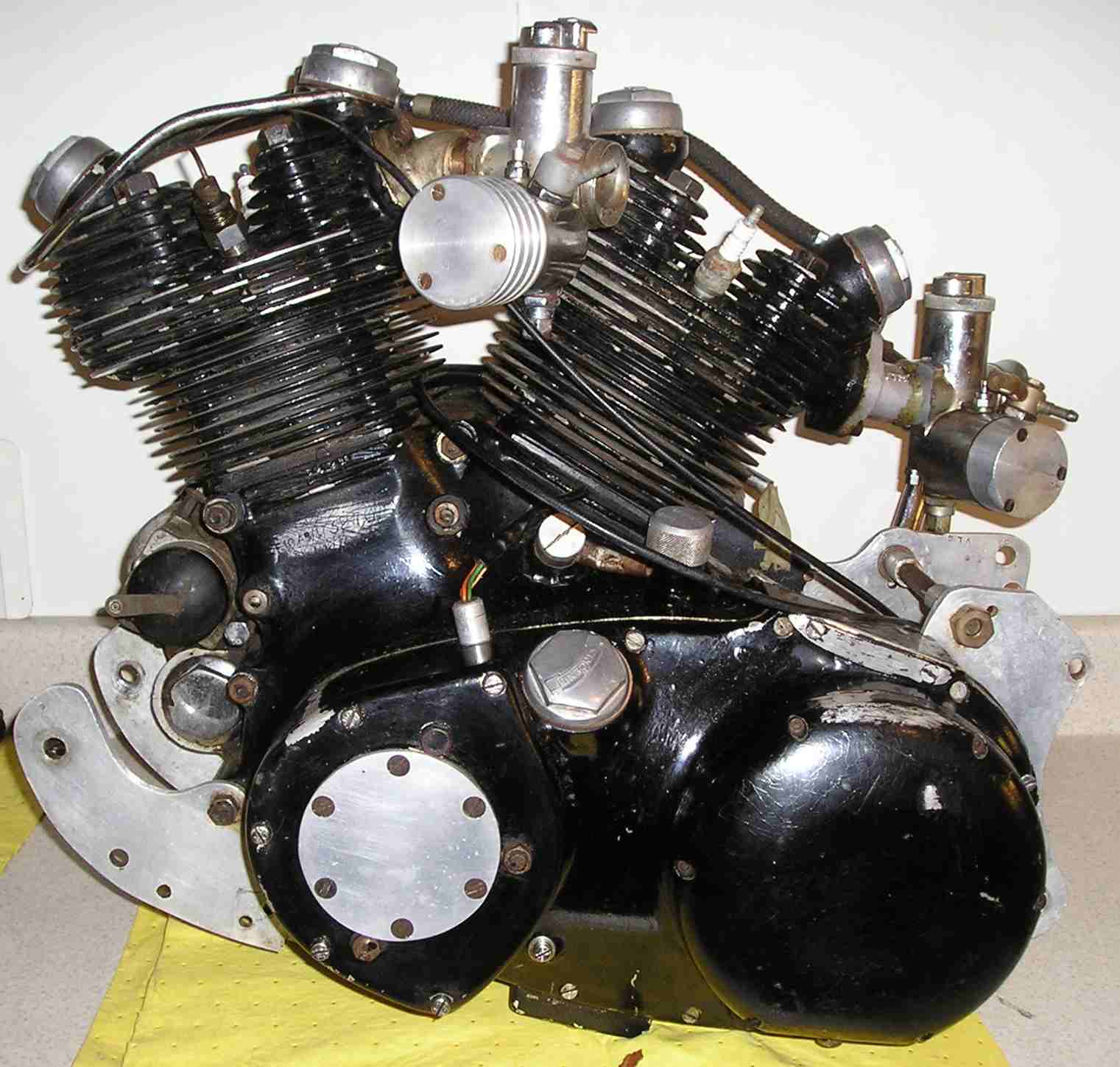
Partial List of
Modifications:
* Both camshafts are
supported
on both ends by bushings in the crankcase wall and in the
timing cover.
* Comet style timing cover
has
been modified for oil flow, bushings and a viewing port to
examine the
timing marks of the large idler and the front camshaft pinion.
* Quick release/access ATD
cover.
(For use in conjunction with the cam timing viewing port ?)
* Generator and drive loop
removed
and 4-wire Wipac alternator installed under modified primary
cover.
* Norton multiplate clutch
running
in oil bath.
* Dual Royal Enfield
decompressors.
* Flange mount Amal 389
carburators
modifed to clip mount with (3) 120 degree screws for location.
( Intake ports on both heads
appear
unmodified 1.125" )
* Vent tube installed in
front
of transmission oil filler cap.
* Modified 5-flat pushrod
tube
nuts.
* Safety plate over top of
camplate
spindle.
* Left rear crankcase mount
for
swingarm machined off.
* Alloy Idler has steel
toothed
ring shrunk onto perimeter.
* Steel idler plate.
Actually looks
like brown paint, not rust. Scrapes off. Crankcase timing
chest painted
black on the inside.
* Primary chain adjuster has
been
replaced by one of the builders own design.
* Black Lightning cams,
drilled
cam pinions and lightened pushrods. Flywheels appear to
be polished.
* Modified head studs.
* Horizontally split K/S
cover
with relieved area for oil lines.
 Engine
3270 as installed in Norvin XKK 383 about 1969. Note
unusual bottom
link front forks, possibly inspired by experimental Manx
racers of that
era. A unique Norvin one would remember.
Engine
3270 as installed in Norvin XKK 383 about 1969. Note
unusual bottom
link front forks, possibly inspired by experimental Manx
racers of that
era. A unique Norvin one would remember.
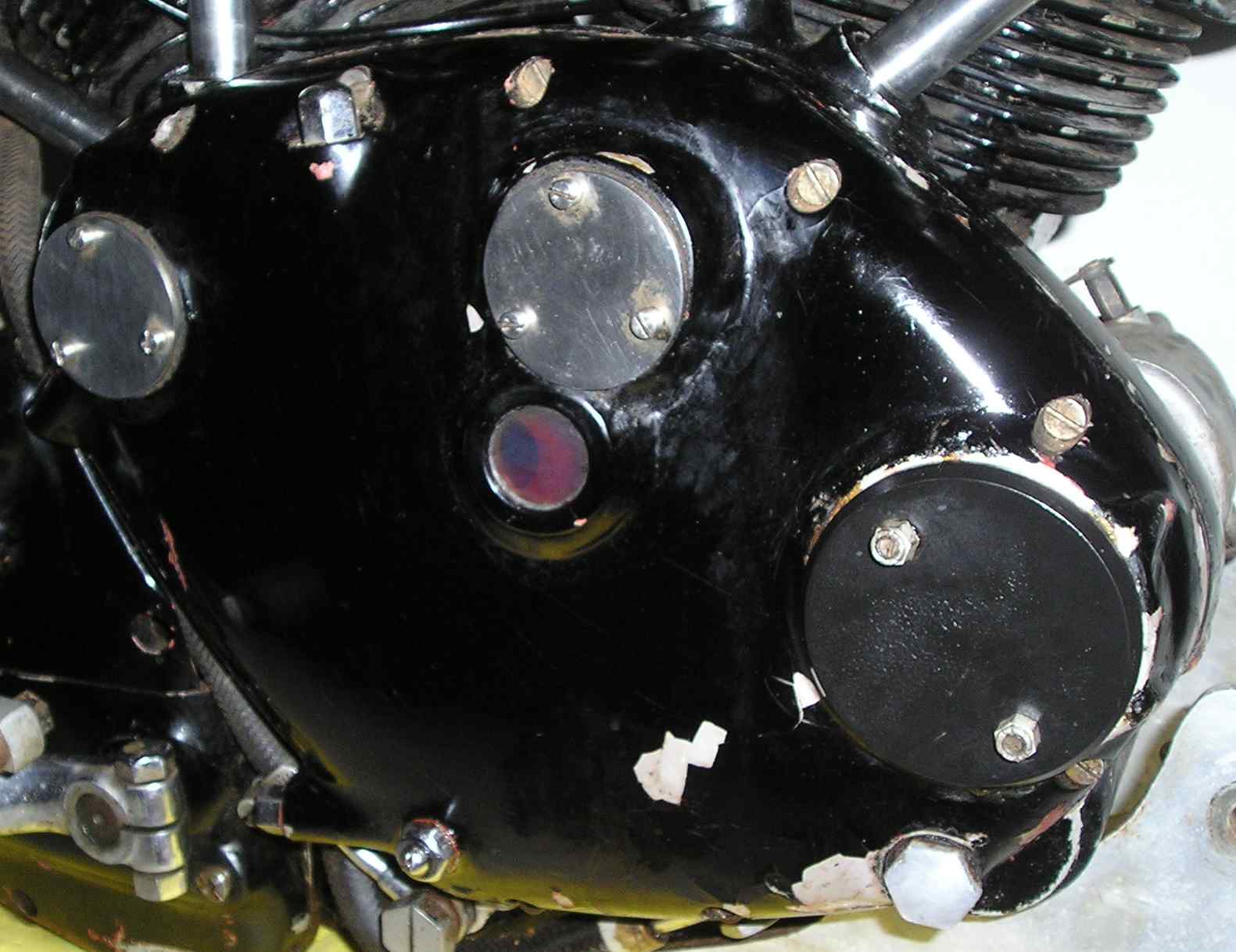
The engine has not been
opened to
determine further modifications to the heads/
transmission/etc..
Engine internals are reportedly to "Black Lightning Specs".
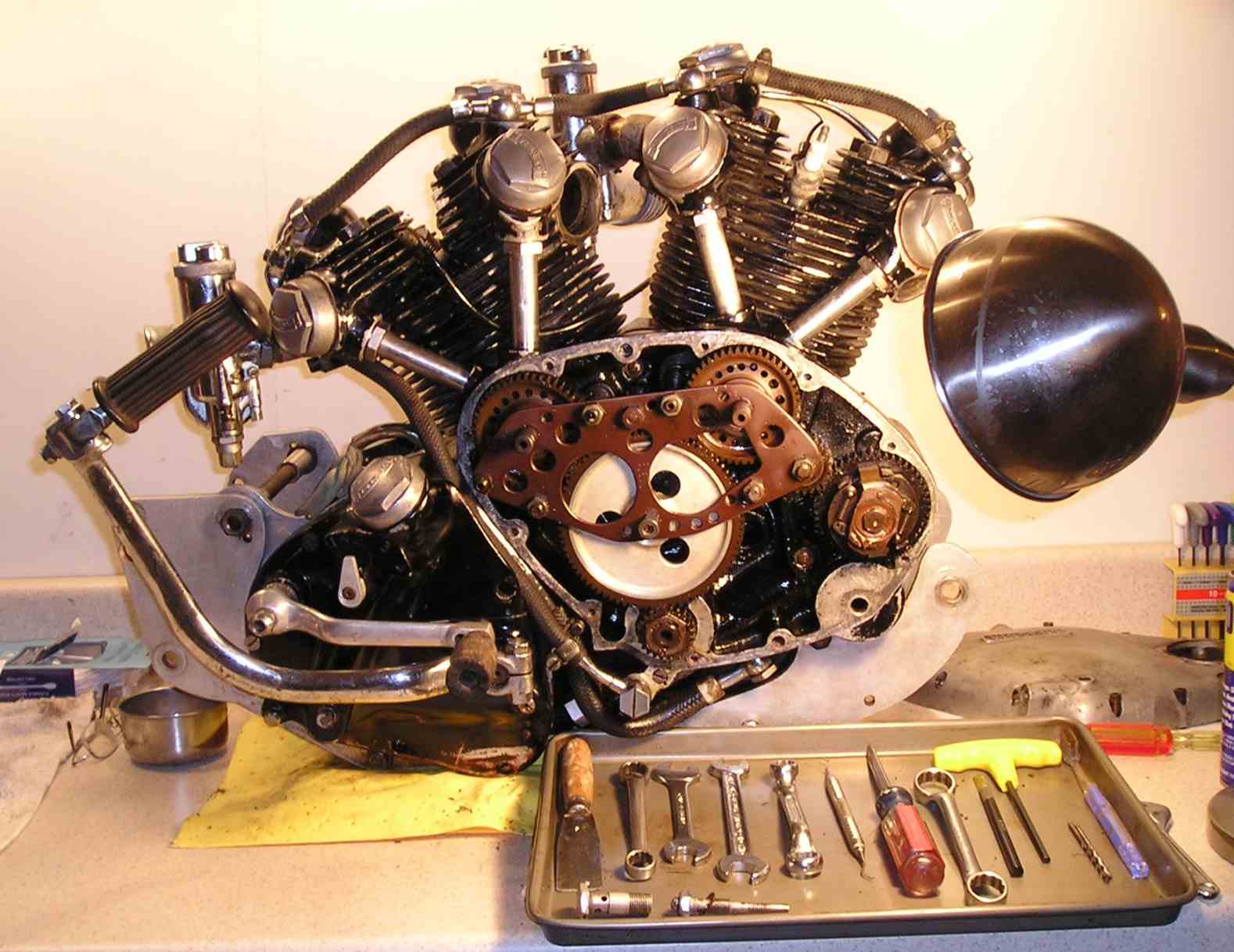
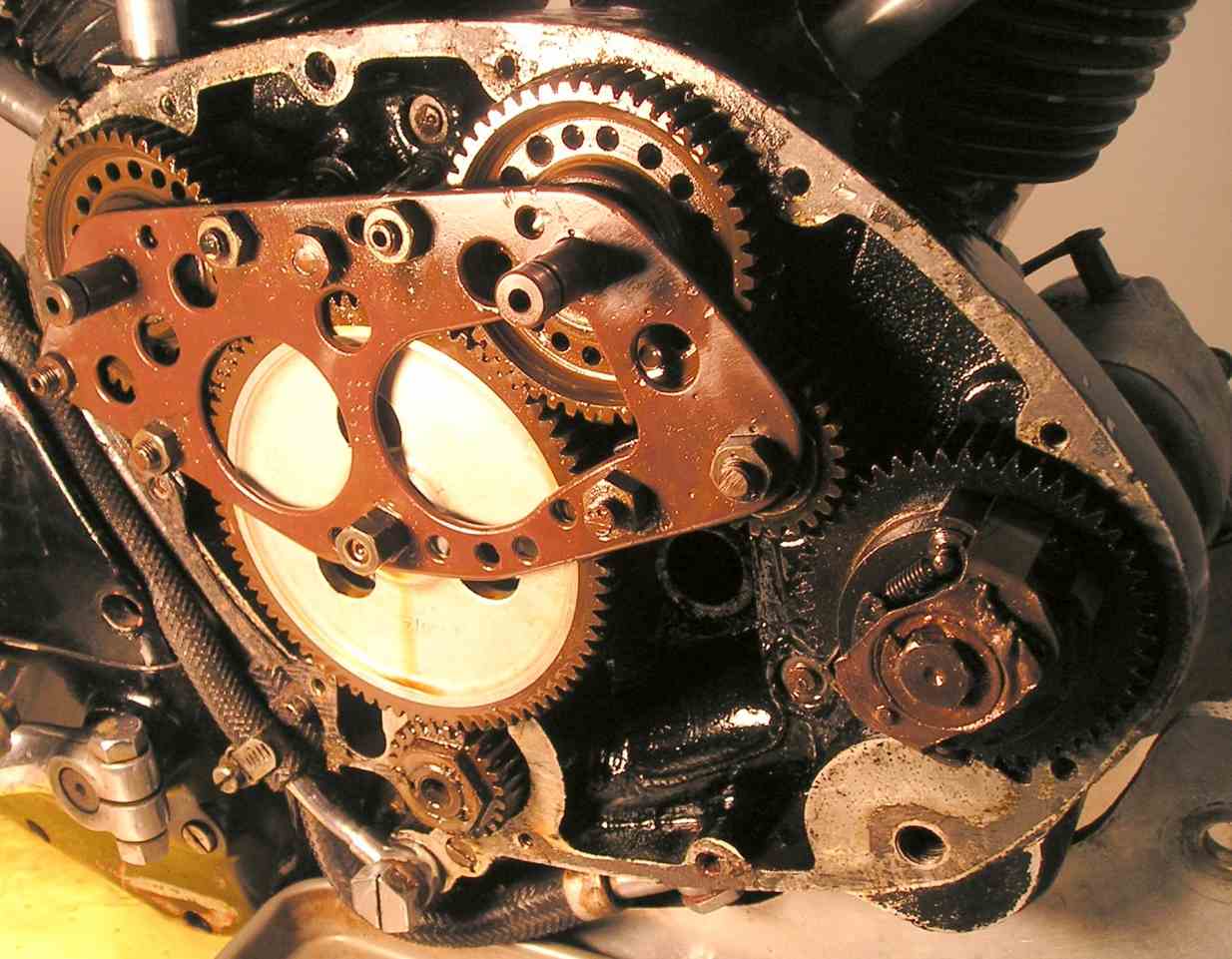
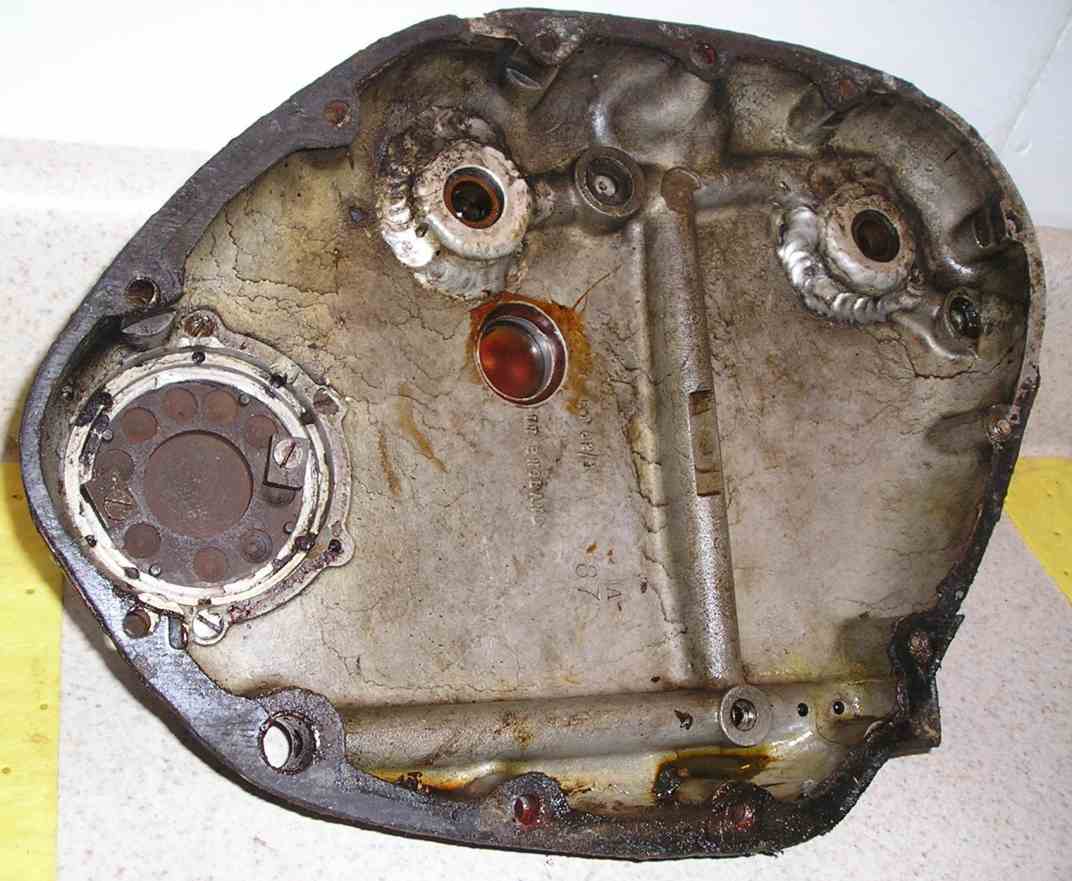
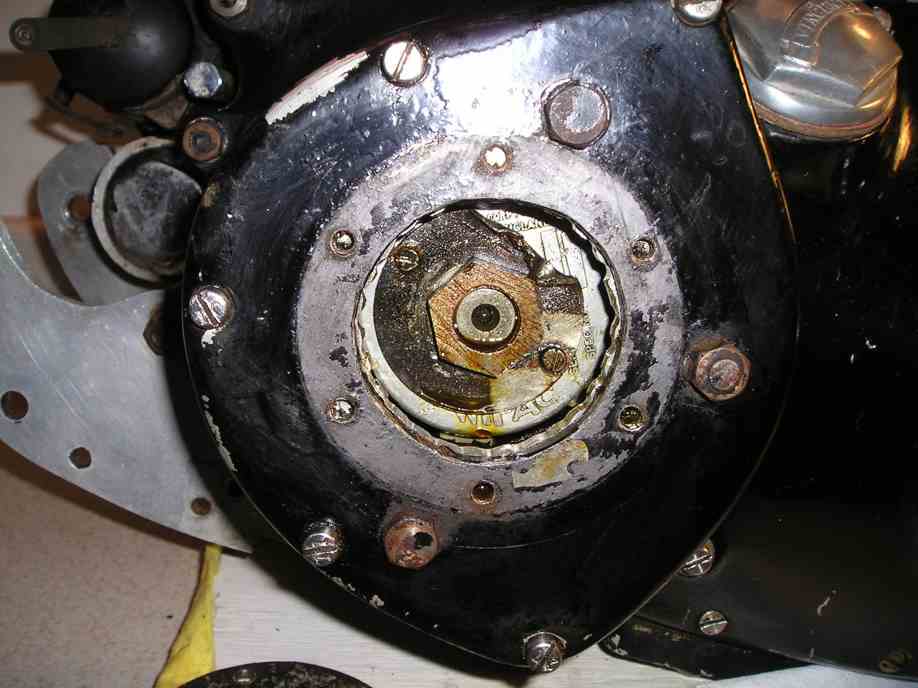
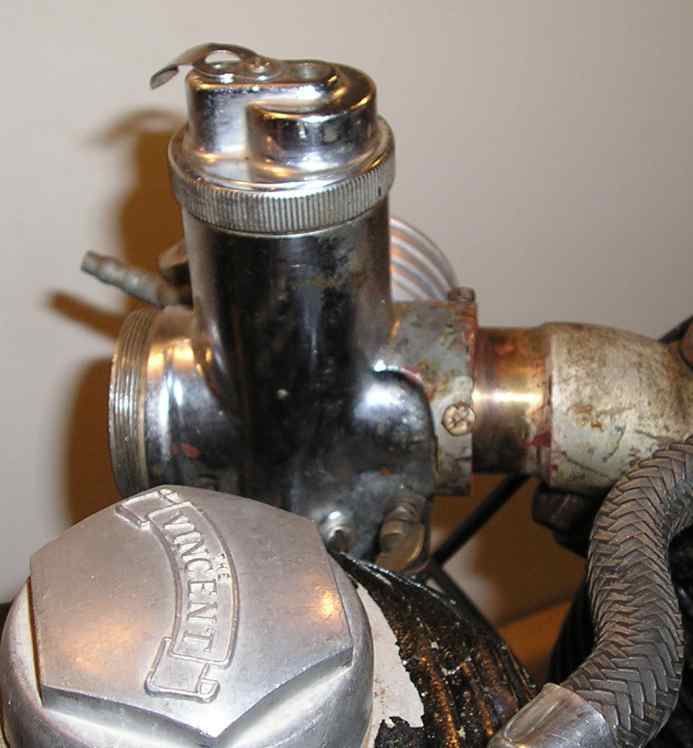
In any event, I will be looking for a stock primary cover, timing cover and an engineless Vincent or Egli as a home for this unique engine. The engine should be rebuilt by a Professional prior to running.... regardless of whether stock or modified. I can only think of one highly skilled machinist who has the gifts take on this mission to save a historic engine. Unfortunately this cranky retired machinist has repeatedly told me to stop calling and to go away.
Was the 1968 designer, machinist and racer all the same person or three different people ? So many mysteries... Some of the above information has been provided by the ever helpful VOC Machine Researcher Vince Farrell, the VOC Norvin Section and the VOC Racing Section Organizers. If you have any further information about this Norvin, engine 3270 or John Peart, please contact jim@thevincent.com. The story of this Vincent engine is still being written.
Thanks again..... for your support of this website.
The original bike - those
forks
look like something that Norton had on some of their Manx
racers at one
time (and the swing arm looks spindly enough to be a Manx item
as well)
so maybe it was a Manx framed NorVin (after all why put a Vin
in a "heavy"
stock Norton chassis) - especially when "the vogue" was for
fast engines
into the frames of all the slow ex-racing Manxes available at
the time.
Phil Davies